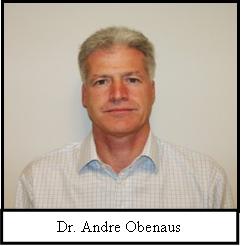Drs. Obenaus and Ashwal Recognized by the Faculty of 1000
Dr. Andy Obenaus and Dr. Steve Ashwal, both members of the UCR Stem Cell Center, have learned that their recent article dealing with imaging of stem cells in neonatal ischemic injury has been evaluated and reviewed by the Faculty of 1000 (F1000), placing this article in the top 2% of published articles in biology and medicine. The Faculty of 1000 is a service that is designed to find and highlight significant new research articles. Congratulations to both Drs Obenaus and Ashwal on this exciting new publication!
The full citation for this article is: Long-term magnetic resonance imaging of stem cells in neonatal ischemic injury. Obenaus A, Dilmac N, Tone B, Tian HR, Hartman R, Digicaylioglu M, Snyder EY, Ashwal S., Ann Neurol 2011 Feb 69 2:282-91 PMID 21387373 DOI 10.1002/ana.22168
The full text of the article by Drs Obenaus and Ashwal can be found at:
http://onlinelibrary.wiley.com/doi/10.1002/ana.22168/abstract;jsessionid=22C199EFF723273F23DA74151A4B2454.d02t01?systemMessage=Wiley+Online+Library+will+be+disrupted+14+May+from+10-12+BST+for+monthly+maintenance
Review by the Faculty of 1000: This article demonstrates a non-invasive method to label and track neuronal stem cells over an extended period of time. Such monitoring will be essential for assessing the migration and integration of any implanted cells intended to facilitate tissue repair. The authors induced hypoxic ischemic injury (HII) in 10-day old rat pups via unilateral carotid artery occlusion and 1.5 hours exposure to hypoxic (8% O2) conditions. Murine neural stem cells (mNSCs) were labeled with Feridex and implanted into the contralateral ventricle and striatum three days later. Serial MRIs were performed at regular intervals for one year after implantation. In control animals (mNSCs implanted, no HII), there was minimal migration of mNSCs, and the mNSC volume decreased linearly over time. In pups with HII, however, mNSCs were shown to migrate to the ischemic lesion within 1-2 weeks, more extensively with ventricular implantation. The volume of mNSCs in HII pups increased almost three-fold initially, indicating proliferation, then decreased over time but remained ~50% larger than the volume of mNSCs demonstrated in control animals. mNSCs were detectable in all animals at one year, and MRI signals correlated with the histologic location and number of labeled cells. The majority of mNSCs remained undifferentiated, though some differentiated into neuronal cells (5%), oligodendrocytes (4%), and astrocytes (30%). This study confirms that mNSCs can be iron-labeled, migrate to the site of injury, and remain viable within the rat brain. Additionally, it demonstrates that MRI is a viable method for long-term detection of iron-labeled mNSCs and may be useful for tracking migration and proliferation in an effort to optimize the timing and location of implantation. Unfortunately, as Feridex is no longer manufactured, additional investigations will be necessary to find suitable alternative labels.
More information on the Faculty of 1000 can be found at: http://f1000.com/10236959

